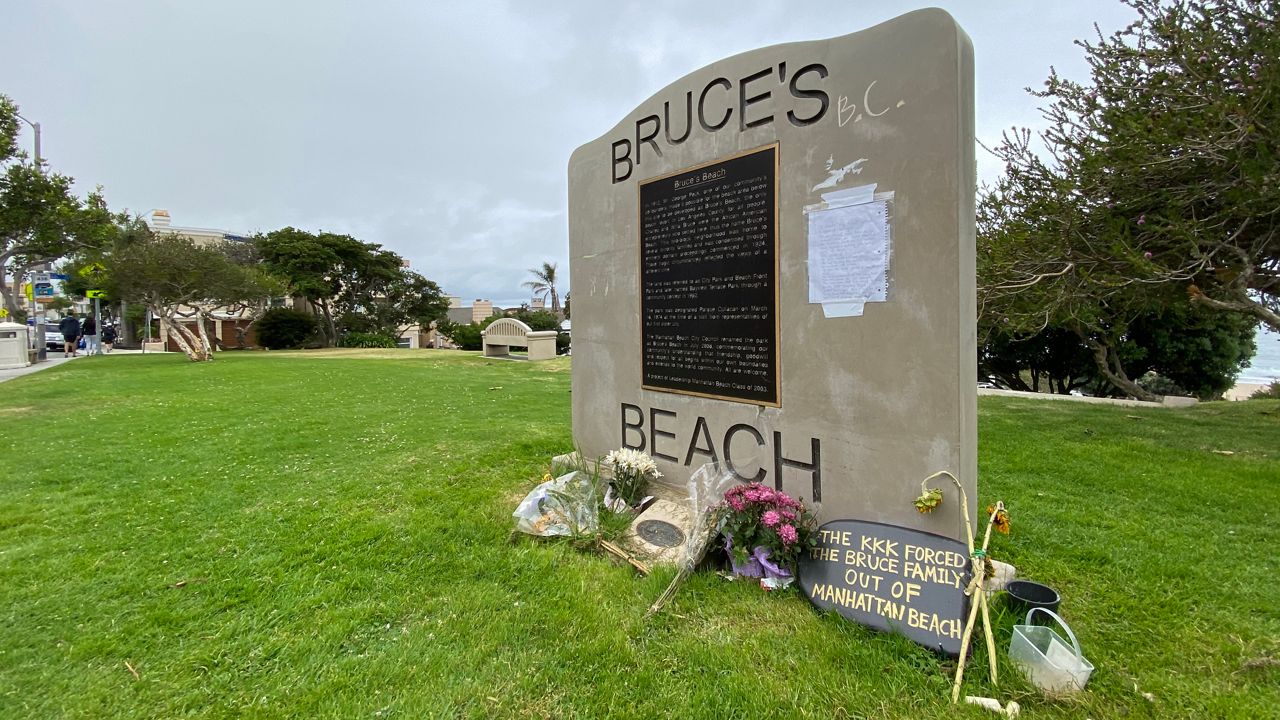LOS ANGELES (CNS) — Moving another step forward in its effort to return oceanfront Manhattan Beach property to descendants of a Black family who were evicted from the property decades ago, Los Angeles County has released a detailed — yet complex — plan for transferring the property.
The plan, released Wednesday, walks through a series of steps for returning the land to the descendants of Willa and Charles Bruce — including assessment of the property's value, identifying the Bruces' legal heirs and figuring out what to do with a county lifeguard station on the property.
"When I first realized that the county owned the property that was once Willa and Charles Bruce's Beach Lodge, I knew that returning it to the Bruce family was the right thing to do. But this is the first time a government has done anything like this and there were a lot of questions about how it would work," Supervisor Janice Hahn said in a statement.
"Now, this report outlines a clear pathway forward for us to transfer this land and addresses everything from identifying the rightful descendants of Willa and Charles Bruce, to the ongoing lifeguard operations at the site, to mitigating the tax burden for the Bruce family. I am committed to getting this done and setting an example for governments nationwide for how we can begin to right the historic injustices committed against African Americans in this country," Hahn said.
Since the parcels of land owned by the county and targeted for transfer are deed-restricted, the effort to return land to the Bruce family requires final approval of state legislation authorizing the move.
But there are local issues as well, including possible rezoning of the property that would need approval from local agencies including the California Coastal Commission.
According to the plan, the county Treasurer and Tax Collector Department will work jointly with the County Public Administrator's Office to determine the Bruces' legal heirs. A third-party law firm may also be called in to help sort the matter out.
The county will also have to negotiate an agreement for the land transfer, one that eases the property tax burden on the descendants when they take possession. The county will also have to find land to relocate the lifeguard facility at the site.
The county's CEO's Office and Anti-Racism, Diversity and Inclusion Initiative is expected to get back to the Board of Supervisors with further details in about four months, after evaluating the impacts of the property transfer. The plan did not provide a date by which the land would need to formally be transferred.
The Los Angeles County Board of Supervisors voted unanimously April 20 to direct the county's CEO to come up with a plan to return the property to the family and to support the bill, the passage of which is required to make the transfer possible.
The public seizure of the Bruce's Beach property has long stained the history of Manhattan Beach, particularly in the past year amid a nationwide reckoning on racial injustice.
Willa and Charles Bruce purchased land in 1912 for $1,225. They eventually added some other parcels and created a beach resort catering to Black residents, who had few options at the time for enjoying time along the California coast.
Complete with a bath house, dance hall and cafe, the resort attracted other Black families who purchased adjacent land and created what they hoped would be an ocean-view retreat.
But the resort quickly became a target of the area's white populace, leading to acts of vandalism, attacks on vehicles of Black visitors and even a 1920 attack by the Ku Klux Klan.
The Bruces were undeterred and continued operating their small enclave, but under increasing pressure, the city moved to condemn their property and other surrounding parcels in 1924, seizing it through eminent domain under the pretense of planning to build a city park.
The resort was forced out of business, and the Bruces and other Black families ultimately lost their land in 1929.
The families sued, claiming they were the victims of a racially motivated removal campaign. The Bruces were eventually awarded some damages, as were other displaced families. But the Bruces were unable to reopen their resort anywhere else in town.
Despite the city claiming the land was needed for a city park, the property sat vacant for decades. It was not until 1960 that a park was built on a portion of the seized land, with city officials fearing the evicted families could take new legal action if the property wasn't used for the purpose for which it was seized.
The exact parcel of land the Bruces owned was transferred to the state, and then to the county in 1995.
The city park that now sits on a portion of the land seized by the city has borne a variety of names over the years. But it was not until 2006 that the city agreed to rename the park "Bruce's Beach" in honor of the evicted family. That honor, however, has been derided by critics as a hollow gesture toward the family.



